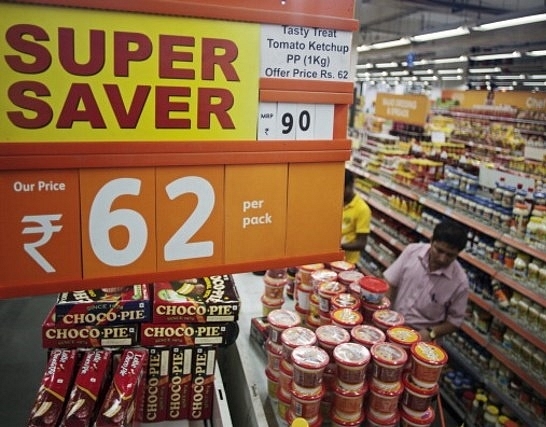Economy
Does GST Mean One Nation, One Tax? You Must Be Joking

Consumer market (Prashanth Vishwanathan/Bloomberg via Getty Images)
The interesting unanimity in many headlines yesterday (4 August) in print and TV was the idea of “one-nation-one-tax”. It is certainly true that goods and services taxes are being merged, and both centre and states are unifying their indirect systems, making it possible for us to become a single union for many traded goods and services over time. But one-nation-one-tax is a bit of an exaggeration. We are nowhere near that ideal.
Consider:
- Even after GST comes into being, there will be two taxes, central and state, and states may have varying GST rates. Some could have top-up rates to make up for revenue shortfalls. And even within the GST structure, there could be three rates, one standard, and two merit and non-merit rates, below or above the standard rates.
- Some of the biggest revenue grossers, petroleum goods, alcohol and tobacco, are not quite in GST, and will have separate rates, often independently decided by states and centre. The reality is a further bifurcation of “one-tax” into two – those in GST and those outside it.
- Some 54 percent of goods in the Consumer Price Index basket are not under GST, Chief Economic Advisor Arvind Subramanian told TV channels yesterday. You may have one GST, but the bulk of our goods may escape GST. This is one reason why the initial “standard” GST rate may be as high as 20 percent.
- In the name of helping the poor, states and centre will be tempted to offer differential treatment to “items of mass consumption”; so there could be yearly tweaking of goods and services rates. GST will not be invulnerable to electoral calculations.
- Beyond GST, we will still have income tax, profession tax, various city and local level taxes, tolls and cesses. Though cesses are supposed to be subsumed in GST, no one can rule out new cesses if they seem warranted by revenue or infrastructure considerations.
- One-nation-one-tax should ideally mean similar treatment for goods and services across India; but even after GST is implemented, it will be implemented by one central bureaucracy, and 31 state and Union territory bureaucracies, whose attitudes to taxpayers remain unchanged. The rampant corruption in the administration of sales tax at the state level means that there will be many vested interests keen to keep their share of illegal side incomes. Let’s not forget, at the state level officers have actually paid huge sums for some kinds of “lucrative” postings – in the octroi department, or in customs or excise. They will need to recover their investments and will not make the transition to GST easier.
- Even at the central level, one-nation-one-tax calls for a merger of the two apex tax administrative authorities – the Central Board of Direct Taxes (CBDT) and the Central Board of Excise & Customs (CBEC). This is because GST will mandate the uploading of invoices, and a collection of a company’s invoices should give us a figure close to its overall sales turnover from operations, which will have implications for corporation tax. The CBDT people need to feed off the GST numbers churned out by the CBEC and vice-versa. It is only by sharing information that we will expand the tax base and prevent evasion.
- An unanswered question is whether a supplier in State A, filing his GST returns in one state, will be cross-checked in the destination state of the final good or service delivered for ensuring authenticity. If this is true, bureaucratic intrusion will worsen.
GST may be big bang reform,
but a reform implemented by an unreformed bureaucratic system will be a new tax
on the nation. It will be a while before GST comes close to the ideal of one-nation-one-tax.
Support Swarajya's 50 Ground Reports Project & Sponsor A Story
Every general election Swarajya does a 50 ground reports project.
Aimed only at serious readers and those who appreciate the nuances of political undercurrents, the project provides a sense of India's electoral landscape. As you know, these reports are produced after considerable investment of travel, time and effort on the ground.
This time too we've kicked off the project in style and have covered over 30 constituencies already. If you're someone who appreciates such work and have enjoyed our coverage please consider sponsoring a ground report for just Rs 2999 to Rs 19,999 - it goes a long way in helping us produce more quality reportage.
You can also back this project by becoming a subscriber for as little as Rs 999 - so do click on this links and choose a plan that suits you and back us.
Click below to contribute.
Latest